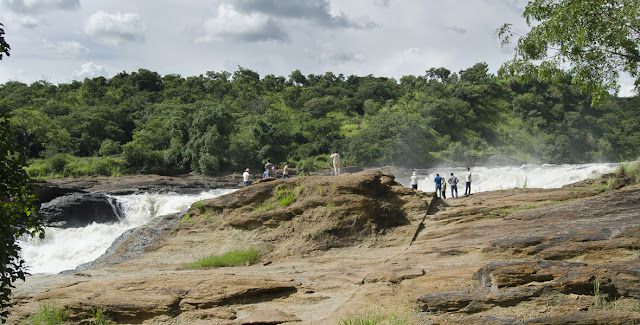A MEDLEY OF WONDERS
The grasslands of the park settles wildlife such as Cape buffalo, Uganda kob, waterbuck, warthlog, lion, leopard, hyena, giant forest hog as well as elephants.Topis can only be discovered in Ishasha and forest primate found in Kyambura gorge in addition to Maramagambo forest.
Africa has some protected areas. Therefore the park’s remarkable birdlist that to exceed that of the neighboring Virunga National Park. Among these include African skimmer, Chapins flycatcher, Pink-backed pelicans, Papyrus canary, Shoebill stork, martial eagle, black-rumped buttonquail as well as the great flamingos.
Around the park
- Mweya Peninsula
- Kazinga Channel.
Kazinga channel has parts for instance North Kazinga as well as Kasenyi.Its acknowledged that the plains of channel are focal points for game viewing. Tracking is the only way that will enable you see all the wildlife in its nature setting for example buffalo, elephants and other animals that dwell in the grassland thickets of the Northern Kazinga close to Mweya.The most accessible spot for lions is in the eastern part of Kasenyi plains and the Kasese road where they quarry on the big inhabitants of Uganda Kobs.The most favorable time for game drives is during morning and late afternoon hours. The work of the range guide is to help you get enough information about the park and still get the most memorable experience in Africa.
- The Equator and the Queen’s Pavilion
- Ishasha Tree Climbing Lions
So it no surprise to say that Queen Elizabeth National Park is undoubtedly Uganda’s most famous national park and traveler’s destination. The presence of varied bionetwork to mention the beautiful lakes, extensive savanna,the natural forests and fertile swamps hence making it the best place the big games, ten primate species of course including chimps , 600 bird species.
Situated close to Mountain Rwenzori, the park’s sites include several beautiful crates lakes that winding through the rolling hills, the panoramic display of the Kazinga Channel with an awesome view of the hippos, buffaloes, elephants and several bird species lined up at the shores. With a continuation towards Ishasha Sector Plains, another surprise of tree climbing lions resting on trees waiting to pounce on the Uganda Kobs and other preys will blow one a way.
Besides the remarkable wildlife attraction, Queen Elizabeth national park also boasts of attractive heritage/ culture history. There are numerous opportunities for traveler and tourists to visit the local population who are entertaining in terms of local music and cultural dances. With all such attractions tours in this park leave tourists wanting for more.
PARK AT A GLANCE
- Size: 1,978km².
- Queen Elizabeth spans the equator line; monuments on either side of the road mark the exact spot where it crosses latitude 00.
- The park was founded in 1952 as Kazinga National Park, and renamed two years later to commemorate a visit by Queen Elizabeth II.
- The park is home to over 95 mammal species and over 600 bird species.
- The Katwe explosion craters mark the park's highest point at 1,350m above sea level, while the lowest point is at 910m, at Lake Edward.









Comments
Post a Comment